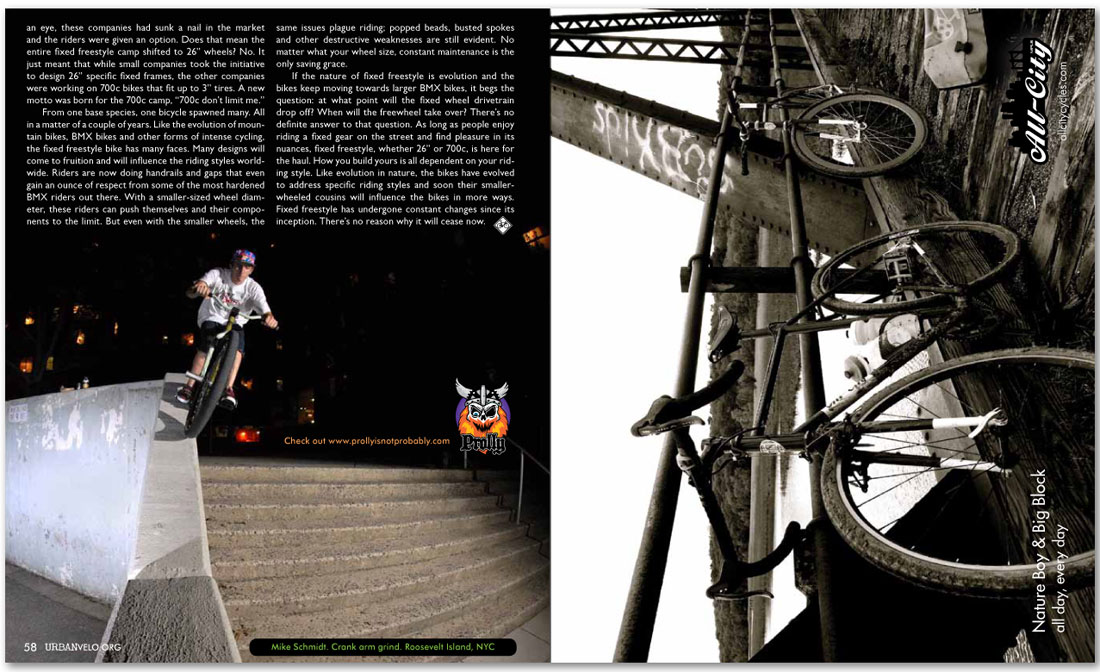


an eye, these companies had sunk a nail in the market and the riders were given an option. Does that mean the entire fixed freestyle camp shifted to 26” wheels? No. It just meant that while small companies took the initiative to design 26” specific fixed frames, the other companies were working on 700c bikes that fit up to 3” tires. A new motto was born for the 700c camp, “700c don’t limit me.”
From one base species, one bicycle spawned many. All in a matter of a couple of years. Like the evolution of mountain bikes, BMX bikes and other forms of intense cycling, the fixed freestyle bike has many faces. Many designs will come to fruition and will influence the riding styles worldwide. Riders are now doing handrails and gaps that even gain an ounce of respect from some of the most hardened BMX riders out there. With a smaller-sized wheel diameter, these riders can push themselves and their components to the limit. But even with the smaller wheels, the same issues plague riding; popped beads, busted spokes and other destructive weaknesses are still evident. No matter what your wheel size, constant maintenance is the only saving grace.
If the nature of fixed freestyle is evolution and the bikes keep moving towards larger BMX bikes, it begs the question: at what point will the fixed wheel drivetrain drop off? When will the freewheel take over? There’s no definite answer to that question. As long as people enjoy riding a fixed gear on the street and find pleasure in its nuances, fixed freestyle, whether 26” or 700c, is here for the haul. How you build yours is all dependent on your riding style. Like evolution in nature, the bikes have evolved to address specific riding styles and soon their smaller-wheeled cousins will influence the bikes in more ways. Fixed freestyle has undergone constant changes since its inception. There’s no reason why it will cease now.
Check out www.prollyisnotprobably.com
Mike Schmidt. Crank arm grind. Roosevelt Island, NYC